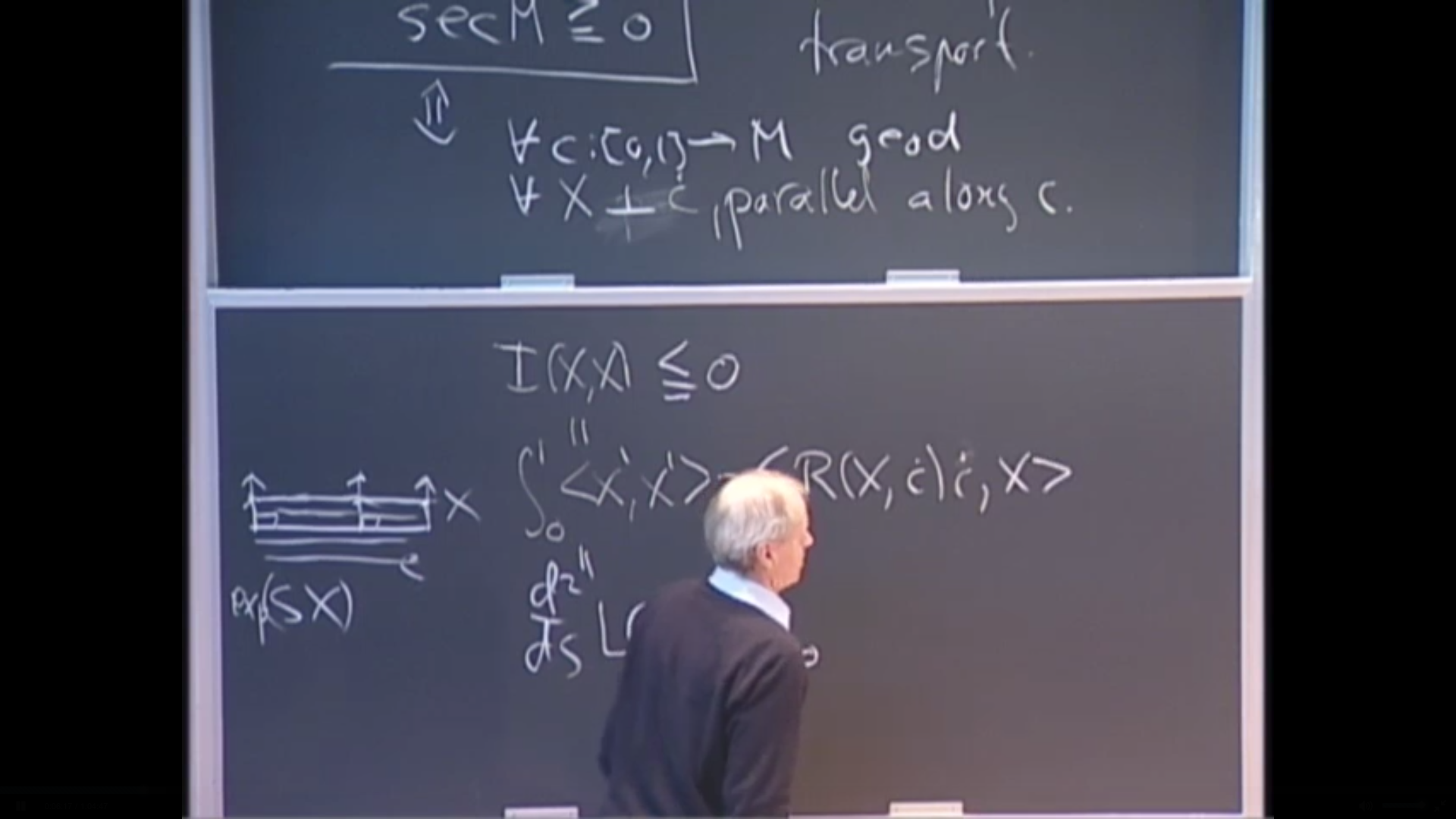A panoramic glimpse of nonnegative curvature
Presenter
January 20, 2016
Keywords:
- differential geometry
- Riemannian geometry
- modern geometry
- curvature
- curvature estimates
- Ricci curvature
- Ricci curvature lower bounds
- sectional curvature
- fixed points of schemes
- critical points
- Gromov-Hausdorff metric
MSC:
- 53-XX
- 53CXX
- 53C21
- 53C44
- 32Q05
- 32Q10
- 58C30
Abstract
The aim of the talk is to provide a survey of the main tools, results and open problems concerning manifolds with positive or non-negative sectional curvature.
The Cheeger-Gromoll Soul Theorem asserts that a complete open manifold M of non-negative
curvature is diffeomorphic to the total space of the normal bundle of a soul S ⊂ M, a totally convex compact sub manifold of M. If M has positive curvature, S is a point. Due to this, our discussion will focus on compact manifolds.
In non-negative curvature in general, the main tools available so far are Morse Theory of geodesics and critical point theory for distance functions in conjunction with Toponogov’s Comparison Theorem as exhibited in Gromov’s Betti number Theorem. When additional geometric constraints are present convexity and Alexandrov geometry occasionally provides additional
The same comments apply to positive curvature in general, except when considering fixed positive lower and upper curvature bounds are assumed, i.e., pinching. Under such assumptions, additional results follow since Gromov-Hausdorff convergence is well understood due to the work on so-called collapse due to Cheeger-Fukaya-Gromov. In the vey special classical case of 1/4-pinching, the Ricci flow is applicable with ultimate recognition results as demonstrated by Brendle and Schoen.
Despite the fact that the class of known manifolds of non-negative curvature is vastly larger than that of positively curved ones, it is not known if there is a difference when considering simply connected manifolds! - When symmetries are present, the situation is very different. In fact, the presence of “large” or “special” isometric groups actions enriches the structure and available tools significantly. This has resulted in several classification type results and the discovery and construction of new examples.
All concepts alluded to above will be explained and discussed, as will examples, some of the main results, and fundamental open problems.
